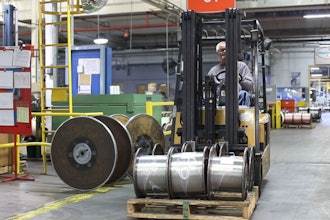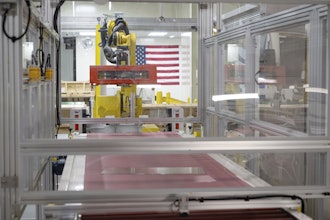WASHINGTON (AP) — The U.S. trade deficit rose in March at the fastest rate in 10 months. A rise in consumer goods lifted imports to a record level, outpacing a solid gain in U.S. exports.
The Commerce Department said Thursday that the trade gap widened to $51.8 billion in March, up from $45.4 billion in February. Imports rose 5.2 percent to a record $238.6 billion, reflecting more foreign oil, autos, cell phones and clothes.
Exports increased nearly 3 percent to $186.8 billion. Sales to Europe reached an all-time high despite the region's debt crisis.
Economists caution that export growth, a bright spot for the U.S. economy, could slow in coming months if more European countries fall into recession.
The 14 percent rise in the U.S. trade deficit from February to March was the sharpest one-month increase since a 16 percent jump last May. For the year, the trade deficit is running at an annual rate of nearly $600 billion. That's about 7 percent more than last year's gap.
A rising trade deficit slows a nation's growth. It means the country is spending more on foreign-made products than it is taking in from sales of U.S.-made goods.
A wider deficit in March could lead the government to lower its estimate for growth in the January-March quarter. Last month, the government estimated that the economy grew at an annual rate of 2.2 percent rate in the first three months of the year, down from 3 percent growth in the previous quarter.
The government will issue its second of three estimates for first-quarter growth on May 31. Some economists say the March trade gap will result in a downward revision in the estimated 2.2 percent annual growth rate. Others say the government had anticipated a wider deficit and think the trade report will have little effect on the updated estimate.
Many economists were puzzled by the jump in exports, given global economic weakness, and the surge in imports, given the slowdown in the U.S. economy in the first three months of this year. Some said they still expected U.S. export growth to weaken in coming months because of Europe's crisis.
"Weak growth both here and abroad is inconsistent with the robust increases reported on both sides of the trade ledger in March," said Joshua Shapiro, chief U.S. economist at MFR Inc. in New York.
For March, the U.S. trade gap with the 27-nation European Union surged to $9.8 billion from $5.9 billion in February. The deficit widened even though U.S. exports to those countries rose 11.5 percent to a record $25.1 billion. That's because imports from Europe rose a faster 22.7 percent to a record of nearly $35 billion.
The U.S deficit trade deficit with China rose to $21.7 billion in March. That was up from a February deficit of $19.4 billion. The deficit with China this year is on pace to exceed last year's gap of $295.5 billion, which was an all-time high for any country.
With millions of Americans still unemployed, political pressure has grown in the United States to impose economic sanctions on China. Critics say China has undervalued its currency against the dollar. Doing so has made Chinese goods cheaper in the U.S. and American products more expensive in China.
The United States and China held high-level talks last week in Beijing, though the discussions were overshadowed by a dispute involving a Chinese dissident. China agreed to let foreigners own bigger stakes in its securities firms and make other concessions aimed at opening its huge market to more foreign companies.
Critics said the moves were unlikely to narrow the trade gap between the two nations much. U.S. manufacturers contend that the Chinese currency is still significantly undervalued against the dollar, giving Chinese exporters an unfair edge.


















